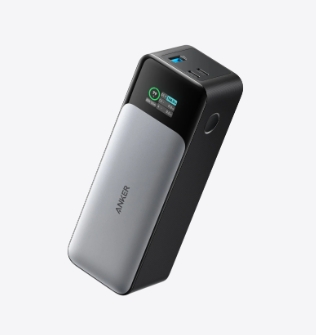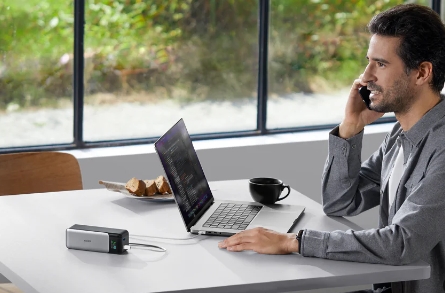
Traveling for work or leisure often means relying on electronic devices to stay connected and productive. Whether you’re answering emails, finishing a presentation, or simply staying entertained during a long flight, a power bank can be a lifesaver. However, not all power banks are allowed on flights, and airline policies can vary significantly. For instance, many travelers wonder, "is 20000mah power bank allowed in flight?" Understanding these rules is crucial to avoid inconvenience or even confiscation at security checkpoints. In this article, we’ll explore the differences in airline power bank policies, discuss where and how to pack your power bank, and provide tips for choosing a travel-friendly model that complies with regulations.

Capacity Limits: What Are the Airline Restrictions on Power Banks?
When it comes to power banks on flights, capacity is the most critical factor. Most airlines follow guidelines set by international aviation authorities, which limit the capacity of power banks to 100 watt-hours (Wh) for carry-on luggage. Power banks between 100Wh and 160Wh may require prior approval, while those exceeding 160Wh are generally prohibited. For example, an Anker power bank with a 20,000mAh capacity and 5V output has a watt-hour rating of 100Wh, making it compliant with most airline regulations. However, some airlines may have stricter limits, especially for international flights. Always check your airline’s specific rules before packing your power bank to ensure a smooth travel experience.
Carry-On vs Checked Luggage: Where Should You Store a Power Bank?
Why Power Banks Are Prohibited in Checked Luggage
Power banks are strictly prohibited in checked luggage due to safety concerns. Lithium-ion batteries, which are commonly used in power banks, pose a fire risk if they are damaged, short-circuited, or exposed to extreme temperatures. In the cargo hold, where checked luggage is stored, a fire could go unnoticed until it’s too late. In contrast, carry-on luggage allows flight attendants to quickly respond to any issues. For instance, if an Anker power bank were to overheat or malfunction, having it in your carry-on bag ensures that it can be addressed immediately. This rule is universally enforced across airlines to prioritize passenger safety.
Best Practices for Storing Power Banks in Carry-On
When storing a power bank in your carry-on luggage, there are a few best practices to follow. First, ensure the power bank is easily accessible, as security personnel may need to inspect it. Second, protect it from physical damage by placing it in a padded compartment or a protective case. Third, keep it away from metal objects like keys or coins, which could cause a short circuit. For example, an Anker power bank with a durable casing is less likely to be damaged during travel. Finally, always carry the original packaging or documentation that shows the power bank’s specifications, as this can help prove compliance with airline regulations if needed.
Airline-Specific Rules: How Policies Vary Between Major Airlines
Major International Airlines’ Power Bank Policies
While most major international airlines follow similar guidelines, there can be subtle differences in their power bank policies. For example, airlines like Emirates and Singapore Airlines allow power banks up to 100Wh without prior approval, but they may require additional documentation for models between 100Wh and 160Wh. On the other hand, airlines like Delta and American Airlines strictly enforce the 100Wh limit for all power banks. It’s essential to check the specific rules of the airline you’re flying with, especially if you’re traveling internationally. For instance, an Anker power bank with a capacity of 26,800mAh (100Wh) is generally accepted, but always verify with your airline to avoid any last-minute surprises.
Low-Cost Carriers and Their Restrictions
Low-cost carriers often have stricter policies when it comes to power banks. Airlines like Ryanair and Spirit Airlines may impose lower capacity limits or require passengers to declare their power banks at check-in. Some budget airlines even limit the number of power banks you can carry, typically allowing only one or two per passenger. For example, if you’re flying with a low-cost carrier, an Anker power bank with a 10,000mAh capacity is a safer choice, as it’s less likely to exceed their restrictions. Always review the airline’s policy before your flight to ensure your power bank complies with their rules.
Choosing a Travel-Friendly Power Bank: What Features to Look For?
Airline-Compliant Capacity and Size
When selecting a power bank for travel, capacity and size are the most important factors. Look for models that are within the 100Wh limit, such as an Anker power bank with a 20,000mAh capacity. These power banks are compact enough to fit in your carry-on bag without taking up too much space. Additionally, consider the physical dimensions of the power bank. Slim, lightweight designs are ideal for travelers who need to stay mobile. For example, an Anker power bank with a sleek, portable design can easily slip into a laptop bag or backpack, making it a convenient choice for frequent flyers.
Safety Certifications and Fast Charging
Safety should always be a priority when choosing a power bank, especially for air travel. Look for models with certifications like UL (Underwriters Laboratories) and CE (Conformité Européenne), which indicate that the product has been tested for safety and compliance with international standards. For instance, Anker power banks are known for their rigorous testing and adherence to these certifications, making them a reliable choice for travelers. Additionally, consider features like fast charging and multiple ports. A power bank with USB-C Power Delivery (PD) can charge compatible devices like laptops and smartphones at significantly faster speeds, ensuring you stay powered up during your travels.

Conclusion
Traveling with a power bank doesn’t have to be stressful if you understand the rules and choose the right model. By checking airline-specific policies, storing your power bank in carry-on luggage, and selecting a travel-friendly option like an Anker power bank, you can ensure a smooth and hassle-free experience. Remember, you are generally allowed to bring a portable charger on a plane as long as it complies with airline regulations, such as the Anker 733 Power Bank and Anker 737 Power Bank, which are designed with travel-friendly features and safety certifications.